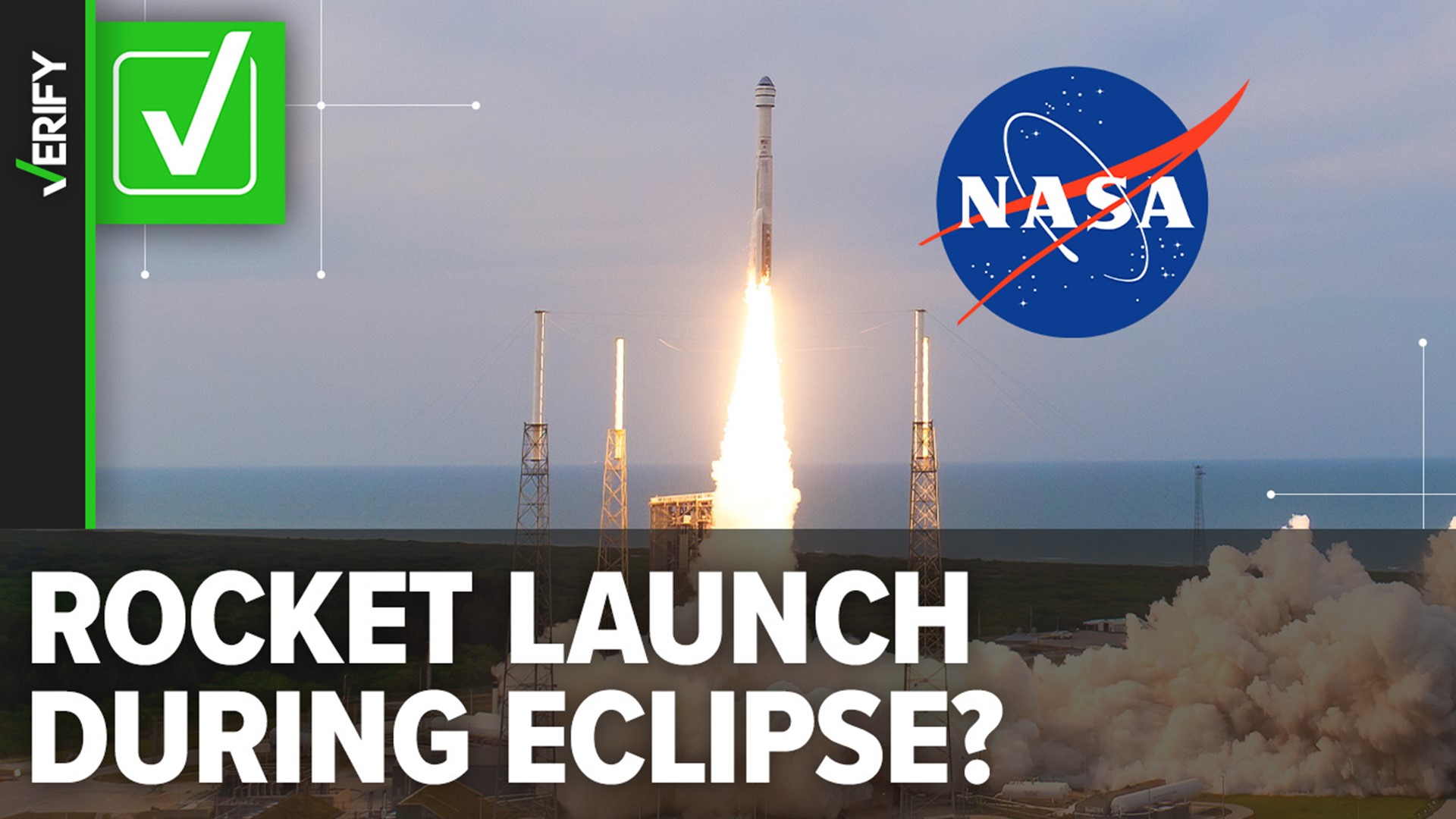On Monday, April 8, a total solar eclipse will cross parts of 15 U.S. states from Texas to Maine, plunging residents into midday darkness.
The eclipse will last almost twice as long and have an even wider audience than the 2017 solar eclipse.
VERIFY has fact-checked multiple claims leading up to the total solar eclipse, including if it will make your cell phone act strangely and whether it will affect animal behavior.
Other people have also claimed in recent social media posts that NASA will launch rockets during the eclipse, with some wondering why this is happening.
“Can someone explain to me why NASA is shooting three rockets toward the upcoming solar eclipse,” one of the posts says.
THE QUESTION
Is NASA launching rockets during the solar eclipse?
THE SOURCES
THE ANSWER
Yes, NASA is launching rockets during the solar eclipse for research purposes.
WHAT WE FOUND
NASA is launching three rockets into the moon’s shadow on April 8 to study how the eclipse affects Earth’s upper atmosphere.
The three sounding rockets equipped with scientific instruments will launch from NASA’s Wallops Flight Facility in Wallops Island, Virginia.
Sounding rockets are commonly used to study the upper atmosphere. Unlike larger rockets that launch satellites or people, which can be hundreds of feet tall, sounding rockets are about 40 to 80 feet tall, NASA’s Goddard Space Flight Center explains.
The rockets will launch at three different times: 45 minutes before the peak eclipse, when the eclipse reaches its peak and 45 minutes later. They are expected to reach a maximum altitude of roughly 260 miles.
People in the mid-Atlantic region of the U.S. may be able to see the rocket launches, depending on weather conditions.
The mission’s main goal is to study and characterize eclipse-related disturbances, or “perturbations,” in an upper layer of Earth’s atmosphere called the ionosphere, Aroh Barjatya, a professor of engineering physics and director of the Space and Atmospheric Instrumentation Lab at Embry-Riddle Aeronautical University, said in an article published by the university.
The ionosphere is an “electrified region that reflects and refracts radio signals, and also impacts satellite communications as the signals pass through,” Barjatya, who is leading the mission, told NASA.
As the moon’s shadow races through the atmosphere, “the rapid, highly localized sunset and sunrise create large-scale waves and small-scale perturbations that can interfere with radio communication,” Barjatya explained.
“Gathering the data on these perturbations will help scientists validate and improve current models that help predict potential disturbances to our communications, especially high frequency communication,” NASA says.
Rockets are a better choice than satellites for studying changes in the ionosphere during an eclipse because satellites “may not be at the right place or time to cross the eclipse path,” NASA explains.
This isn’t the first time NASA has flown these exact same rockets into an eclipse’s shadow for research purposes. The federal space agency launched them from White Sands Test Facility in New Mexico in October 2023 during the annular solar eclipse. They were “refurbished with new instrumentation” before the 2024 relaunch, NASA said.
During the 2023 rocket launch, researchers saw “perturbations capable of affecting radio communications in the second and third rockets, but not during the first rocket that was before peak local eclipse,” Bajatya said.
“We are super excited to relaunch them during the total eclipse, to see if the perturbations start at the same altitude and if their magnitude and scale remain the same,” he added.
If you are able to see the rocket launches while viewing the total solar eclipse on April 8, make sure to keep your eclipse glasses on to protect your eyes. You can read more tips to safely view the total solar eclipse here.
NASA will also livestream the launches on the Wallops YouTube channel beginning at 2:30 p.m. E.T. on Monday, April 8.
The Associated Press contributed to this report.

